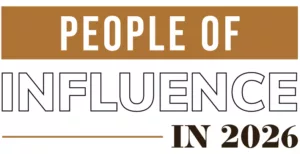
Home » Visions 2023: Digital trends fuel evolution in financial services
Visions 2023: Digital trends fuel evolution in financial services
Rapid adoption of tech tools said here to stay

December 29, 2022
November 2022 marked an important milestone in Washington Trust Bank’s history: its 120th anniversary.
In many ways, banking in 1902 looked nothing like it does today—no debit or credit cards and no online or mobile access, for starters.
Times have certainly changed, and recent acceleration of digital trends has fueled the rate of evolution in financial services. Over the next five years, banks will be challenged to stay a step ahead and anticipate consumer needs to retain market share.
The rapid adoption of technological tools is here to stay, and consumers and businesses are becoming more dependent on having all they need at their fingertips. That reliance on the Internet of Things means that financial institutions should continue paying heed to how their customers’ many connected devices will communicate with an enterprise’s systems and cloud, not to mention between one another, as account information may be called up on a tablet, phone, watch, or other device.
Over the next five years, demand for products and services accessible from any touchpoint will only increase. IoT-powered systems will need to perform certain operations automatically, such as processing requests, opening accounts, disabling credit cards, and accepting loan applications, to name a few.
Consumers also will be seeking greater flexibility and convenience in managing their money. For instance, more peer-to-peer payment systems are likely to come to market. Already, the integration of third-party P2P apps, such as Zelle and Venmo, allows for seamless, real-time transactions. Continuous development and incorporation of such services will be critical to providing convenient, quick, and free tools that meet the expectations of new generations entering the financial world.
More devices mean more opportunity for good or ill.
While being able to deliver banking when, where, and how customers want, and it will enable financial services organizations to build loyalty, this convenience can be a double-edged sword. The sheer number of connections—Transforma Insights estimates 25.21 billion devices will be connected worldwide by 2028—is creating a fabric of intricately interwoven devices, and even those that may not contain sensitive data themselves may provide a back door to one that does.
As consumers increasingly use the Internet of Things when banking, financial services companies will need to make their products and services safe to access. In addition to ensuring secure connections, organizations will need to provide consumers with recourse should any suspicious activity arise, such as through prompt alerts on their various devices along with clear, direct options to disable accounts temporarily until an investigation may be conducted.
Beyond ensuring the security of their customers’ user experiences, financial institutions will need to be dedicated to evolving their enterprise security protocols continuously. The shift to remote and hybrid work arrangements has taxed enterprise information technology departments, as the attack surface for an organization has spread beyond the traditional bounds of a corporate network.
To ensure the safety and security of financial information—at both customer and corporate levels—banks will need to stay on top of security best practices, such as by increasing their fraudulent vetting systems. Security teams may look to incorporating enhanced fraud detection software and new and improved tools that continuously monitor user behavior and high-risk online activity.
Banks cater to multiple generations, with each demographic shaped, in part, by events in their history as well as by their comfort with rapid technological advances. Despite their differences, baby boomers, Gen X, millennials, and Gen Z all appear to agree that personalization is critical in a banking relationship. A 2021 survey by Capco found that, combined, 72% rated personalization as “highly important.”
Consumers have needs specific to them, and they want solutions that fit their place in life—not solutions that require them to contort their situations to fit a prescribed notion.
Over the next five years, financial institutions should expect this need for customization to grow and become ever more precise. In essence, it is expected that what is now considered personalization will morph into micro-personalization.
Along with growing demand for personalization, banks are seeing heightened interest in their efforts to support positive change in environmental, social, and governance issues. Consumers are paying more attention to everything from climate change to racial equity to executive compensation packages, and they are forging relationships with businesses that are aligned on values. A PWC survey found 75% to 80% of consumers are more likely to do business with a company that stands up for ESG issues, and the rates are even higher (83% to 86%) for employees and where they want to work.
Despite the significant changes that have altered the face of banking over the past 120 years, one thing has remained the same: the importance of relationships. Consumers certainly want quick and convenient digital access and account features, and this push toward digital has influenced some banks to scale back on physical locations, not to mention the informed bankers who staff them. Consumers, however, still crave a human being to connect with in special circumstances. In Capco’s survey, 63% of respondents welcomed personal conversations with bankers.
Banks that are expanding their physical footprints are betting that their clients, whether consumer or business, will place a high value on the services provided within a location. Physical branches can be a one-stop resource for needs that can’t be fulfilled online, such as safety deposit boxes and notarizations. More importantly, when staffed with well-informed professionals, these locations are also vital sources of reliable and trusted information and guidance, no matter the prevailing economic or other market conditions.
The financial services industry has weathered countless storms in the past 120 years, and banks often have served as sources of stability. Given recent events and the part that banks have played in supporting their clients and communities, keeping the customer at the center of all decisions should serve banks well in the next five years and beyond.
Jack Heath is president and chief operating officer of Spokane-based Washington Trust Bank.
Latest News Banking & Finance
Related Articles
Related Products



_web.webp?t=1764835652)